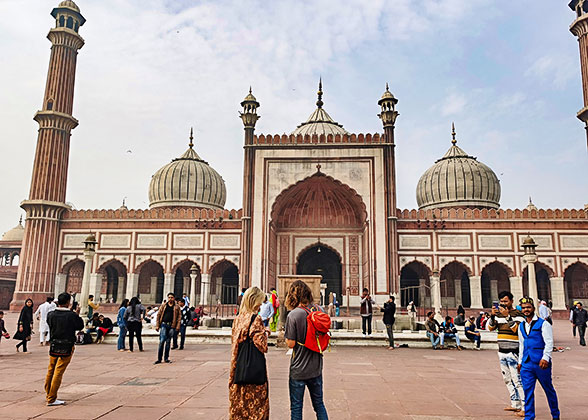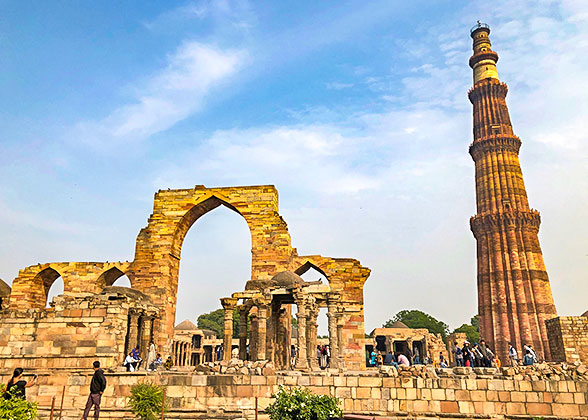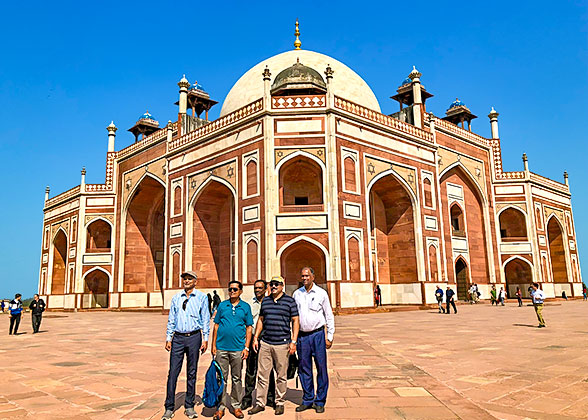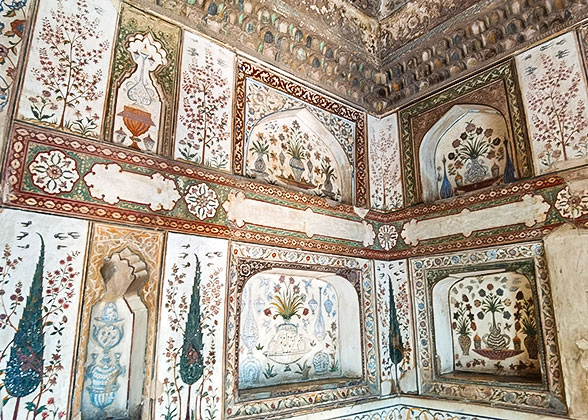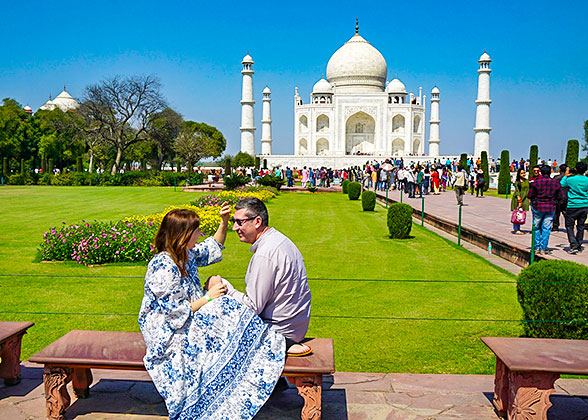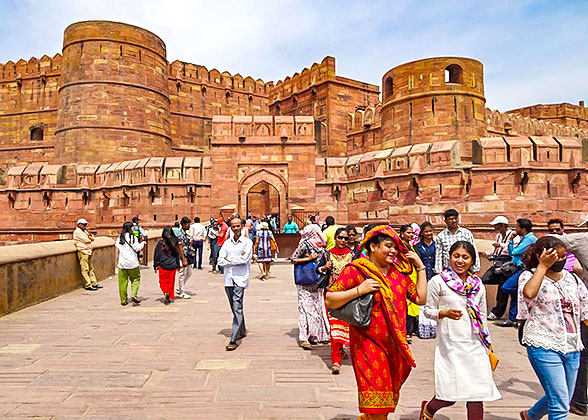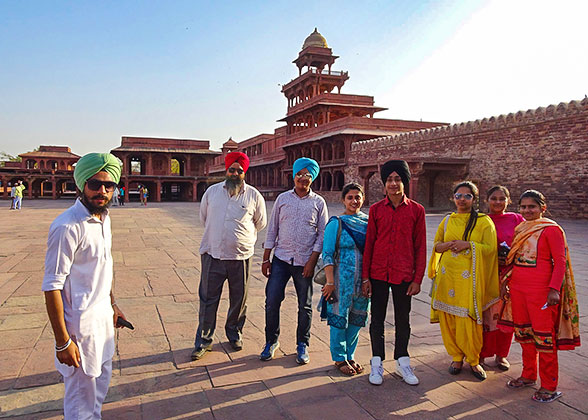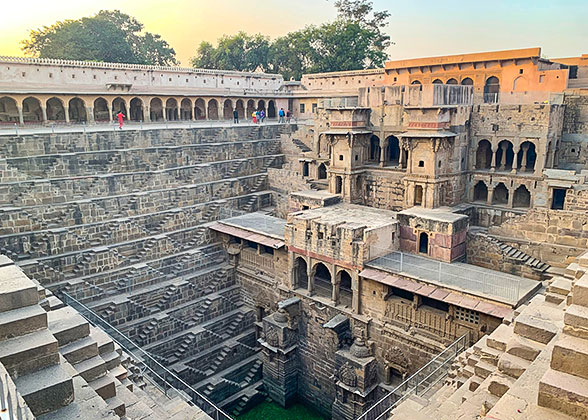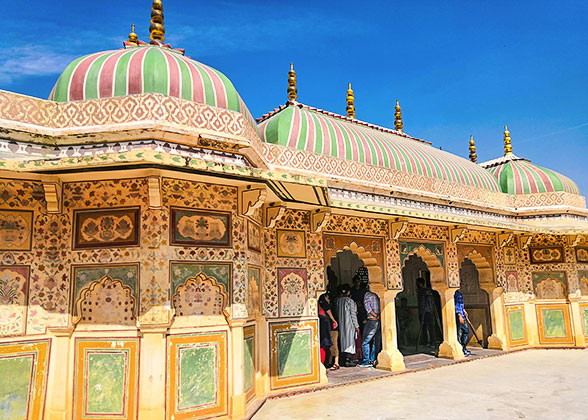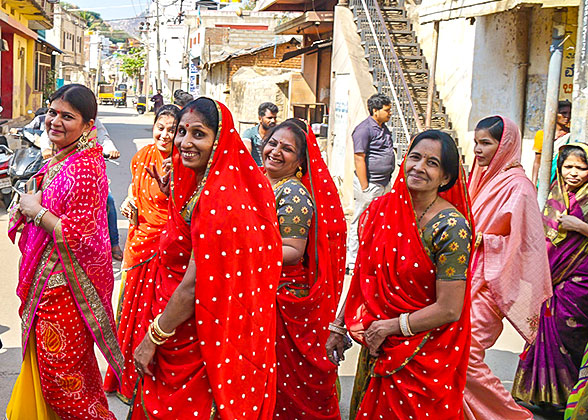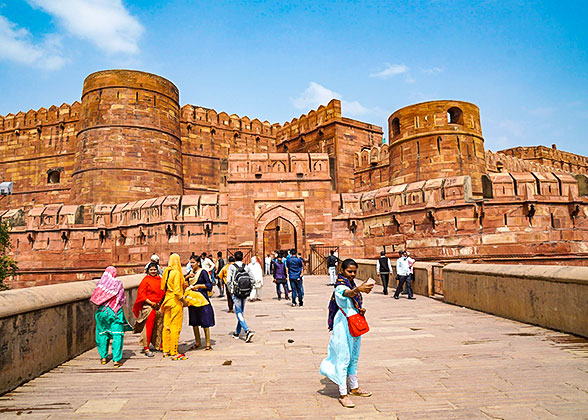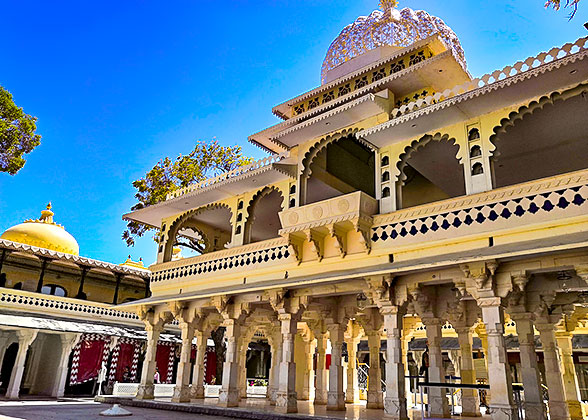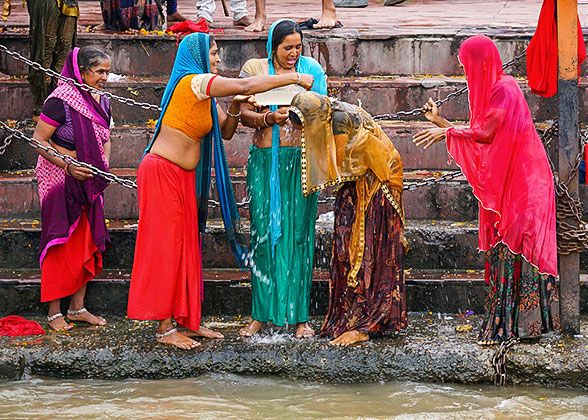Day 1: Arrive in Delhi, India; Airport Pick-up
Golden Triangle of India Welcome to India! When you arrive at the Indira Gandhi International Airport in Delhi, you will be greeted by our representative with a welcome sign. A comfortable private car with chauffeur will be provided to transport you to the hotel in downtown Delhi. Activities & Dinner Suggestion:After check-in, you can spend the rest of the day on your own. You can rest at the hotel to beat jet lag, or if you’re not tired, go for a walk. The 4-star hotel we have selected for you has two stylish restaurants and a bar. There are lively residential areas and busy markets outside, and it is 10 minutes’ walk to the Japanese Park. If you prefer a 5-star hotel, the one we have chosen for you is very satisfying. Located in the heart of New Delhi, it is very convenient for sightseeing and dining around. If you have enough time, you can also consider visiting the nearby National Museum. ★ Tips from Insiders 1. If you will go outside with a taxi, we suggest you call through the APP Uber or Ola to get a fixed price. Cash payment may cause a temporary increase in price or shortage of change. Even more exaggerated, some drivers may use magic to get a few pieces of banknotes disappeared before you. If you have to use cash, ask for help from the hotel staff to settle down the taxi fee. 2. One of the major issues in Indian is the drinking water. We suggest you always drink bottled water bought from big shops or offered by the tour guide and driver. Never try street food or drinks to keep your intestine healthy. Our tour guide and driver will take good care of you and will recommend good restaurants to you during the trip.
|
Day 2: Old & New Delhi: Raj Ghat, Jama Masjid, Qutub Minar, Humayun's Tomb
Sightseeing Activities: We'll start with a visit to the Raj Ghat, the memorial dedicated to the father of India – Mahatma Gandhi, to learn about the life stories and great achievements of this Indian leader. Driving past the massive Red Fort and through the chaos of the Chandni Chowk, we’ll visit the Jama Masjid, India’s second largest mosque which is made of marble and red sandstone. Outside the mosque, our guide will lead you to explore the bustling Chandni Chowk. ★ What makes us different: We will specially arrange for you to visit the Chandni Chowk in the most local form of transport, the rickshaw, which will be a great opportunity to learn about the local life. A ride in a rickshaw through the narrow streets full of wires and noisy people is a powerful cultural shock, but it’s also fun. In the afternoon, we’ll proceed to the Qutub Minar, a soaring minaret considered the largest in India. Later, the guide will take you to the Humayun's Tomb, the first garden mausoleum in India which inspired the design of the famous Taj Mahal. ★ Travel Different with Exceptional Guide Service: Our guide will not only give you a detailed explanation, but years of fieldwork will also give him a thorough knowledge of the best photography techniques of the scenic spots. Therefore, the guide will take you to one of the four corners of the Humayun’s Tomb, which is the best place to photograph the magnificent structure. You can get a very good view with very few tourists. Our next stop will be the India Gate. A giant arch in the similar architectural style of the Arc de Triomphe in Paris, this is definitely the landmark of Delhi. Today’s tour will end at the Gurudwara Bangla Sahib, a prominent Sikh pilgrimage center that dates back more than 300 years. India Gate: the Dividing Line between Old and New DelhiThe whole India Gate is 48.7 meters (160 ft.) high, 21.3 meters (70 ft.) wide and the arch is about 42 meters (138 ft.) high. Built of red sandstone, the magnificent structure is and highly similar to the Arc de Triomphe in France. India Gate is not only a famous war memorial for Indian soldiers who sacrificed in the World War I, but also the dividing line between New Delhi and Old Delhi. South of Delhi Gate is New Delhi and north is Old Delhi. With the old city on the left and the new capital on the right, visitors can observe striking contrasts between tradition and modernity, poverty and wealth, just two worlds in one city. Things change from old to new, but the landmark is always standing. Traveling in India, You will Feel the Great Enthusiasm of Local People Besides the astonishing civilization of ancient India, what impresses you the most may be the enthusiasm and warmth of the local people. They always face all oversea tourists with big smiles and they really enjoy taking photos with foreigners in tourist sites. You may find you are already a celebrity with so many requests for group photos. If you are happy with that, just enjoy your time, otherwise, say “no” directly to avoid being disturbed too much. Meals: Breakfast
|
Day 3: 3.5-hour private drive from Delhi to Agra, Agra city tour
Sightseeing Activities: In the morning, we will set off to Agra by private car in 3.5 hours’ drive. After a short break at the hotel, we will visit the Tomb of Itimad-Ud-Daulah, aka the Baby Taj, a magnificent mausoleum that has influenced many other marble buildings, such as the Taj Mahal. In the afternoon, we'll take a walk around the Mehtab Bagh, aka the Moonlight Garden, a serene quadrangle Mughal-era garden that offers the best place to appreciate the Taj Mahal across the river. At sunset, the breathtaking view would make you linger. ★ Bonus of Our Guests On the way to Agra, our driver can take you to one of the small villages if you are interested in the local villagers’ life. What can you see there? Women with water tanks or firewood on their heads, how they cook with the traditional kitchen range, their very basic daily necessities and living environment. No matter how difficult life may be, they always show kindness and a shy smile to all visitors. Tipping USD1 will be highly appreciated by the family members. The Toilet Revolution in India Due to religious reasons, Indians believed that in-home toilets were blasphemy against the gods. It's NO exaggeration that some villages don't even have a sheltered toilet and they make it in the open air, which was totally unfriendly and unsafe to women. On October 2, 2014, the Toilet Revolution initiated by Indian Prime Minister Modi was officially implemented, and the project was announced to be completed in 2019. The report stated that the toilet problem was solved for 99% of rural population in only 5 years. Till now, the Indian government is still making continuous efforts to improve these issues and has also achieved significant results. While, you never need to worry about this when you are traveling through countryside, your guide and driver know where to make a stop for the nature calls. Please do remember to take the toilet paper. Meals: Breakfast
|
Day 4: Agra Highlights Sightseeing: Taj Mahal & Agra Fort
★ Travel Different - See Taj Mahal at Sunrise: Today is the highlight of our trip to India, for the visit to the world-famous Taj Mahal. Unlike other travel agencies that schedule a visit to the Taj Mahal in the crowded morning or afternoon, we would take the unusual step to visit it in the early morning. Our guide will wake you up early in the morning and you are advised to pack light to get through the security check and into the Taj Mahal before most of the tourists fail to arrive. Your eyes will be lit by the first rays of sunlight on the Taj Mahal. Let’s visit it in the most beautiful light of the day, and capture the pure scenes without visitors. How to Capture the Most Beautiful Reflection of the Taj Mahal The best place can be the bench in front of the central pool in the middle of the garden, where you can capture the perfect symmetric frame and stunning reflection. Our experienced guide goes to the Taj Mahal over 100 times a year, he is highly familiar with every detail of this famous site and thus he can easily help you to find the best photo locations. Starting in the early morning to avoid big crowds, we will introduce the romantic stories of this marvelous building and will also show you more good places to take photos. After the visit, we will return to the hotel for breakfast before heading to the marvelous Agra Fort, which dates back 400 years. Other than the grand red facade, the Agra Fort will treat your eyes with its delicate Mughal-style carvings. ★ Special Arrangement for Lunch: We don’t arrange lunch at tasteless tourist restaurants, which may be unpalatable to you and a waste of money. Today, we will offer a wonderful opportunity for you to have a cooking demonstration with an Indian family and try a homemade lunch. The hostess will show you how to make authentic Indian food, such as the cooking the vegetables, sauce and pancake making process, etc. You can take part in it if interested with the help of the hostess. After lunch, have a talk with the family to have a general understanding of their living habits, education and other daily routines. We believe the best way of travel is to get to know the locals. For the rest of the time, our driver can take you to local market or anywhere you may like in downtown Agra. Meals: Breakfast, Lunch
|
Day 5: Drive to Jaipur and visit Fatehpur Sikri on the way
Sightseeing Activities: After breakfast, we will set off to Jaipur. On the way, we’ll stop to visit the Fatehpur Sikri, a UNESCO World Heritage site. In 1571, Emperor Akbar established the Fatehpur Sikri as the capital of the Mughal Empire, but soon after a battle in 1585, the once luxurious capital was abandoned and gradually became a ghost town. Follow the guide to walk through the city, and you will find structures in both Hindu and Muslim architectural styles of early Mughal that are well preserved. You will be shown around the Jama Masjid, the Tomb of Salim Chishti, the five-storey Panch Mahal, and Buland Darwaza. The guide leaves and our driver will continue to dive you to the next destination, the Chand Baori in Abhaneri Village, which is the biggest and deepest stepwell with a history of over 10 centuries. The intricate design and fine carvings make it look like a palace from a distance, from which you will marvel at the wisdom of the ancient Indians. After the visit, we will drive to the hotel in Jaipur for the night. Why Was Fatehpur Sikri Abandoned?The main reason why the prosperous city was abandoned gradually is said to be the lack of water. Due to inadequate consideration before construction, the city cannot satisfy so many people’s water needs. In the long run, citizens even had trouble surviving. Many details will gradually unfold as you visit, you may find the walls of the palace are very thick, most of which are hollow. It can be considered the air-conditioning system in ancient India. Water flowed through the hollow walls to ensure the coolness of the entire royal palace. Can you imagine how a large amount of water was needed? A city with extreme water scarcity, coupled with the extravagance and waste of the aristocracy, ultimately led to the relocation of its capital. There is also another saying goes that the city was abandoned due to the pressing military issues that happened in north-western India. Just follow our professional tour guide to discover more hidden stories. Meals: Breakfast Fatehpur Sikri Chand Baori
|
Day 6: Tour Jaipur: Amber Fort, Jantar Mantar, Maharaja City Palace, Hawa Mahal
Sightseeing Activities: In the morning, we will drive half an hour to visit the Amber Fort. Embraced by a moat, this 16th-century complex is located on a small hill. Our guide will take you to admire the magnificent architecture, while explaining the rich history of the Mughal Empire, including glories and treacheries. If you feel tired to go uphill on foot, it is also available for you to take a jeep or an elephant at your own expense. Afterwards, we will drive back to Jaipur City and visit several sites on the way back. The first is the Jal Mahal, a summer palace built in the late 16th century. Situated in the middle of the Sagar Lake, much of this magnificent palace is submerged. Next, we will head to the Maharaja City Palace, a palace used to be the residence for Jaipur royals and now a museum exhibiting the royal articles and ancient weapons. Later, the guide will take you to the nearby Jantar Mantar, an over 200-year-old observatory famous for the biggest stone sundial in the world. Today’s last destination is a photo stop – Hawa Mahal, nicknamed the Palace of the Winds, featuring a honeycomb-like pink facade. In the late afternoon, we will drive past the Pink Rose Garden and the business center back to the hotel. Do You Know the Story of the Tunnels at Amber Fort? In addition to appreciating the magnificence of the structure and the surrounding beautiful scenery, visitors can also discover the intricate tunnels of the Amber Fort. So who built these tunnels and for what? It is said they were built for the king to meet his concubines. The king lived alone on the second floor and his 12 concubines stayed separately in the 12 houses on the first floor. Through the separate tunnels, no one could know which concubine the king planned to meet that night, which ensured the safety of the emperor. Follow our guide and find some of the tunnels built in the name of love. Meals: Breakfast
|
Day 7: Drive to Delhi by Private Car; Airport See-off
Departure Note: Your 7 days India golden triangle tours will end here. In the morning, our driver will escort you in a private car for a 5 to 6 hours’ drive to the Indira Gandhi International Airport in Delhi for your flight home or to your next destination. Wish you a pleasant trip!
Meals: Breakfast
► It is recommended that you book an evening flight to allow enough time for transfer. If you want to extend your stay in India or want to travel to other countries, please let us know and we will be happy to tailor an itinerary for you.
|



